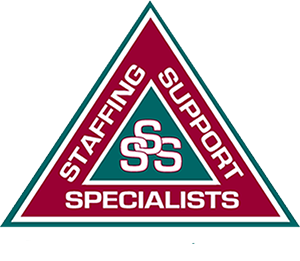Having over 25 years of experience on our team here at Staffing Support Specialists, we have seen almost everything in recruitment and employee retention. One thing that has caught our attention recently is the new term “quiet quitting”.
Whether it is in our social media comments, in emails from our current customers, or even from friends and family in human resources, we have been bombarded with questions about this “new” phenomenon.
We hope to answer some of those common questions about quiet quitting here including what quiet quitting is, where it came from, and how to fix it in order to help your organization get a better understanding of its impacts and the steps that you can take to minimize its effects within your company.
What Is Quiet Quitting?
Quiet quitting is a term used to describe employees who have become so disengaged, that they have chosen to only do the absolute bare minimum required of them to remain employed. An employee can quiet quit for many reasons, but the most common that we see are either the employee feels that they are being treated unfairly with their compensation, or that they are currently looking for another position and do not want to put in the extra effort while they take their time finding something else.
This person is quitting quietly because even though they still come in and get some work done, they have not said anything to their managers and are just doing enough to collect their paycheck.
What we also think is important here is to describe what quiet quitting is NOT. For example, an employee who comes to work every day, does their job, and goes home is not necessarily someone who is a quiet quitter.
These people can still be great employees that are highly engaged in their positions. What you want to keep an eye out for are those that may just be scraping by in their performance reviews, are taking extra time off, and overall do not engage with others in the workplace.
Why Quiet Quitting Is Nothing New
This idea of quiet quitting has become much more popular in today’s increasingly work-from-home environment but it is also seen in many of the industries that we work in, such as manufacturing.
What is interesting about this idea of quiet quitting is how it is shocking our industry despite it being nothing new at all.
Human resource departments have had to deal with the problem of employees being disengaged for as long as they have existed. This is why many have invested countless hours and dollars into creating cultures that are meant to keep employees happy and engaged in the workplace. Quiet quitting is just the new term that is being used to represent this age-old problem.
Knowing this should give HR teams a little sense of relief because this means you have faced these problems already and likely have the tools at your disposal to find solutions.
It should serve as a good reminder to always have a good understanding of the job market in your industry, but also find ways to keep your finger on the pulse of your current employees and the culture that is in place.
How is Quiet Qutting Impacting Companies
Despite it being nothing new, quiet quitting is still something companies are facing today and it can truly have an impact on your entire organization if not addressed.
There are a few reasons for this. First, quiet quitters often do not realize the impact that they are having on the people around them. By only doing what they perceive to be the bare minimum, they are often adding more work onto the plates of others, which can then undermine the remaining team’s engagement as they see that they are doing more than others in the same position. In this type of situation, the problem can continue to snowball as others also become disengaged as a result.
That leads to another issue that quiet quitting can cause, which is inefficiencies. Even a small percentage drop in how productive a team is can have a significant impact downstream and on the bottom line. Making sure team members are as engaged as possible with their work, keeps the engine running throughout the entire organization.
Finally, quiet quitters are notorious culture drainers. When employees become disengaged, they often bring down others around them and tend to have an overall negative effect on morale. Having that negativity spread throughout an entire team or department can become almost impossible to fix if left unaddressed for too long.
How to Stay Ahead of Quiet Quitting Within Your Organization
So what are the possible solutions to quiet quitting and how can you see it before it becomes a bigger problem within your company?
- Employee surveys are a great way to see if any concerns are being shared by multiple people within an organization. Some of these concerns may lead to problems, so addressing them as soon as they are identified can be key.
- Communicating with managers to try and identify those that might be becoming disengaged. Oftentimes, managers will know who these people are right away and it is important to work with them to identify concerns they have and see if they can be addressed.
- Make sure that you are up to date with current market trends, conditions, and compensation packages. Be sure you understand how the market may be changing, and understand that these changes might be the cause for someone becoming disengaged.
- Do not be afraid to use your organization’s performance improvement plan or other processes you have internally for those that are underachieving. As we discussed above, having someone on your team become disengaged or “quiet quit” can be a detriment to your entire organization.
While quiet quitting has become a hot term in our industry, it is not new. Our expert team has worked with many companies before as they tried to address very similar problems in their workforce.
Once you understand that you are not facing a new problem, but one that has just been rebranded, you will realize that you have the knowledge and tools available to find the right solutions. And if you are still feeling a bit lost, our team is here to help you with what you need!












